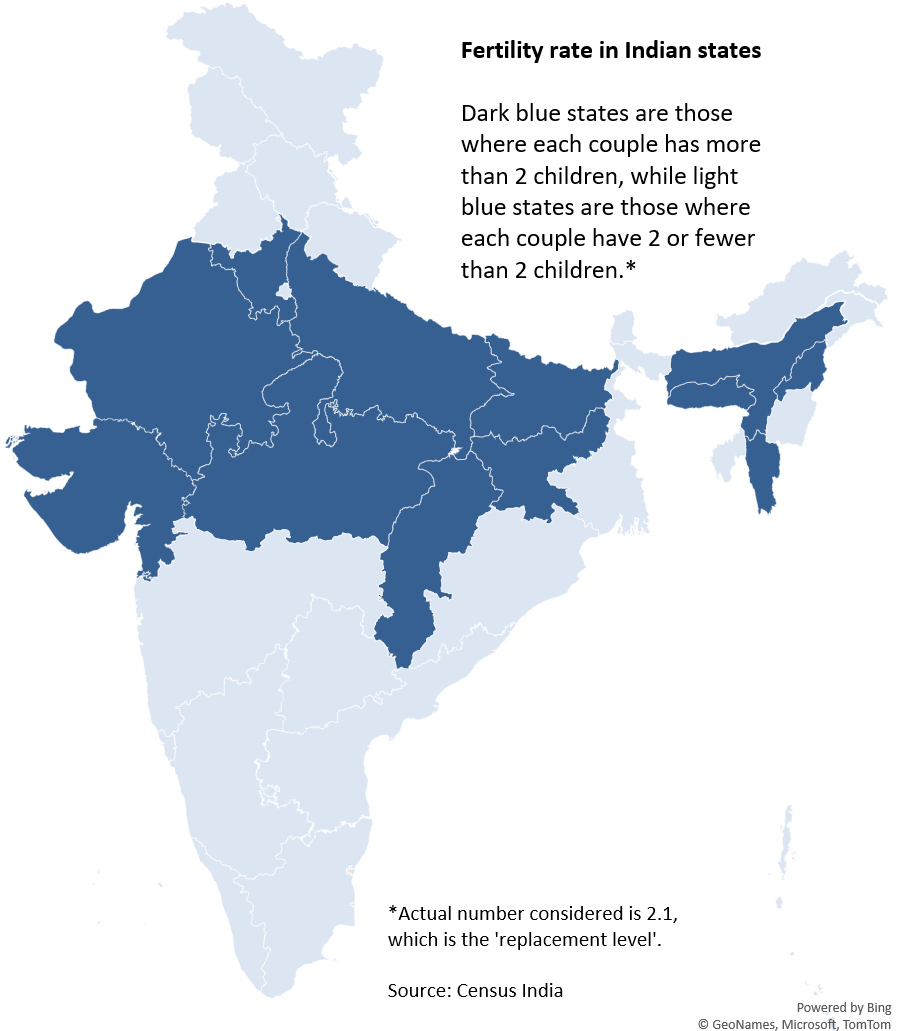People think India's population is ballooning but that is not true anymore.
For decades, India has talked about "hum do hamare do" as a mantra for population control.
In 2020, we may have already reached it. A #thread.
For decades, India has talked about "hum do hamare do" as a mantra for population control.
In 2020, we may have already reached it. A #thread.
Firstly, in most Indian states, each couple *already* has 2 or fewer children. This means that the population in the light blue states (map) is *falling* from one generation to the next.
"Hum do, hamare dedh (one and a half)" is becoming the new reality in most Indian states.
"Hum do, hamare dedh (one and a half)" is becoming the new reality in most Indian states.
We have data until 2017 when Indian couples were having 2.2 children on average.
In 1999, Indian couples had 3.2 children, and in 1981, 4.5.
It's a rapidly declining trend. At recent rates of decline, we may have reached "replacement level" in 2020.
Hum do hamare do? Achieved.
In 1999, Indian couples had 3.2 children, and in 1981, 4.5.
It's a rapidly declining trend. At recent rates of decline, we may have reached "replacement level" in 2020.
Hum do hamare do? Achieved.
But India will still continue to grow in terms of population year on year and exceed China in a few years to become the most populated country in the world.
However, inter-generational population growth has halted.
But variations among states remain.
However, inter-generational population growth has halted.
But variations among states remain.
These are the states in India that have a higher than average fertility rate. But with growing levels of education and more economic growth, this too is falling.
For example, in Bihar, each couple has 3.2 children. But in 1999 each couple had 4.5 and in 1981, 5.7 children.
For example, in Bihar, each couple has 3.2 children. But in 1999 each couple had 4.5 and in 1981, 5.7 children.
Perhaps within a decade, India's most rapidly growing states will also reach replacement level. India's population will start to decline from one generation to the next.
And this is not happening due to some aggressive or draconian population control measures, but due to education, income growth, social security, urbanisation and similar factors.

 Read on Twitter
Read on Twitter





